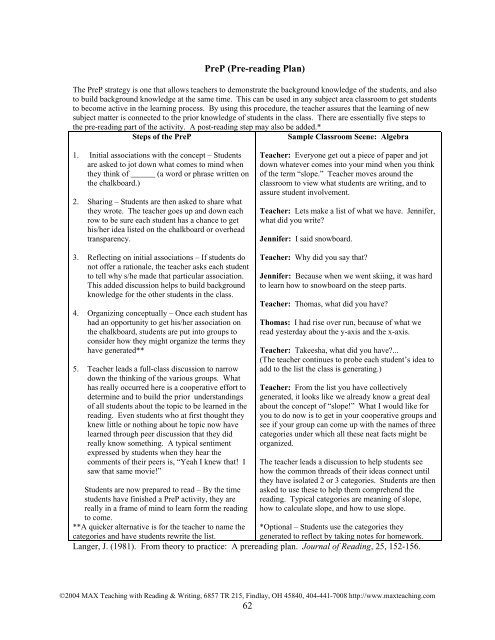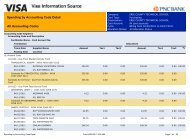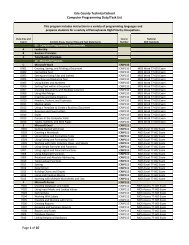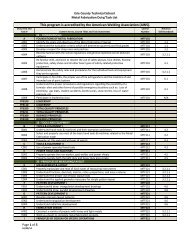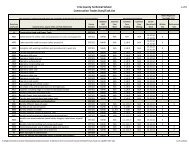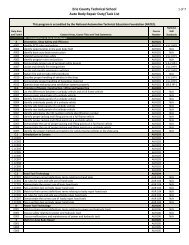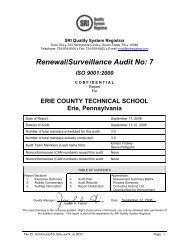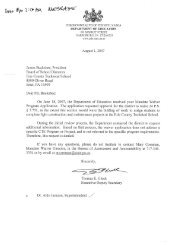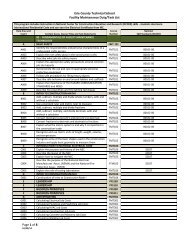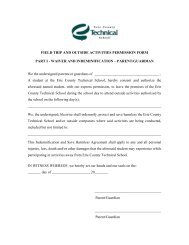MAX Teaching with Reading and Writing - Ects.org
MAX Teaching with Reading and Writing - Ects.org
MAX Teaching with Reading and Writing - Ects.org
You also want an ePaper? Increase the reach of your titles
YUMPU automatically turns print PDFs into web optimized ePapers that Google loves.
PreP (Pre-reading Plan)The PreP strategy is one that allows teachers to demonstrate the background knowledge of the students, <strong>and</strong> alsoto build background knowledge at the same time. This can be used in any subject area classroom to get studentsto become active in the learning process. By using this procedure, the teacher assures that the learning of newsubject matter is connected to the prior knowledge of students in the class. There are essentially five steps tothe pre-reading part of the activity. A post-reading step may also be added.*Steps of the PrePSample Classroom Scene: Algebra1. Initial associations <strong>with</strong> the concept – Studentsare asked to jot down what comes to mind whenthey think of ______ (a word or phrase written onthe chalkboard.)2. Sharing – Students are then asked to share whatthey wrote. The teacher goes up <strong>and</strong> down eachrow to be sure each student has a chance to gethis/her idea listed on the chalkboard or overheadtransparency.Teacher: Everyone get out a piece of paper <strong>and</strong> jotdown whatever comes into your mind when you thinkof the term “slope.” Teacher moves around theclassroom to view what students are writing, <strong>and</strong> toassure student involvement.Teacher: Lets make a list of what we have. Jennifer,what did you write?Jennifer: I said snowboard.3. Reflecting on initial associations – If students donot offer a rationale, the teacher asks each studentto tell why s/he made that particular association.This added discussion helps to build backgroundknowledge for the other students in the class.4. Organizing conceptually – Once each student hashad an opportunity to get his/her association onthe chalkboard, students are put into groups toconsider how they might <strong>org</strong>anize the terms theyhave generated**5. Teacher leads a full-class discussion to narrowdown the thinking of the various groups. Whathas really occurred here is a cooperative effort todetermine <strong>and</strong> to build the prior underst<strong>and</strong>ingsof all students about the topic to be learned in thereading. Even students who at first thought theyknew little or nothing about he topic now havelearned through peer discussion that they didreally know something. A typical sentimentexpressed by students when they hear thecomments of their peers is, “Yeah I knew that! Isaw that same movie!”Students are now prepared to read – By the timestudents have finished a PreP activity, they arereally in a frame of mind to learn form the readingto come.**A quicker alternative is for the teacher to name thecategories <strong>and</strong> have students rewrite the list.Teacher: Why did you say that?Jennifer: Because when we went skiing, it was hardto learn how to snowboard on the steep parts.Teacher: Thomas, what did you have?Thomas: I had rise over run, because of what weread yesterday about the y-axis <strong>and</strong> the x-axis.Teacher: Takeesha, what did you have?...(The teacher continues to probe each student’s idea toadd to the list the class is generating.)Teacher: From the list you have collectivelygenerated, it looks like we already know a great dealabout the concept of “slope!” What I would like foryou to do now is to get in your cooperative groups <strong>and</strong>see if your group can come up <strong>with</strong> the names of threecategories under which all these neat facts might be<strong>org</strong>anized.The teacher leads a discussion to help students seehow the common threads of their ideas connect untilthey have isolated 2 or 3 categories. Students are thenasked to use these to help them comprehend thereading. Typical categories are meaning of slope,how to calculate slope, <strong>and</strong> how to use slope.*Optional – Students use the categories theygenerated to reflect by taking notes for homework.Langer, J. (1981). From theory to practice: A prereading plan. Journal of <strong>Reading</strong>, 25, 152-156.©2004 <strong>MAX</strong> <strong>Teaching</strong> <strong>with</strong> <strong>Reading</strong> & <strong>Writing</strong>, 6857 TR 215, Findlay, OH 45840, 404-441-7008 http://www.maxteaching.com62


